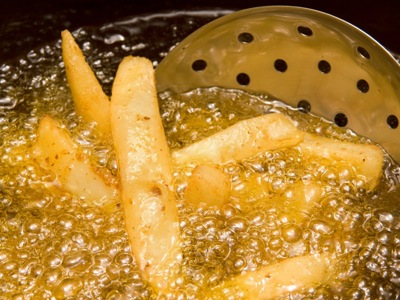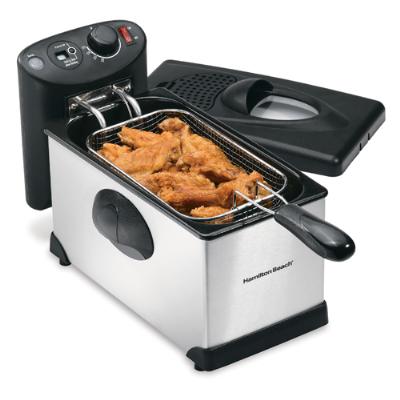
Master the art and science of deep-frying with our handy tips and tricks.
Deep-frying is essentially submerging food in oil or fat and cooking it rapidly at a high temperature. Sure, you will need the right utensils, the correct oil and a bit of know-how, but more importantly, to become an expert deep-fryer you will need to be vigilant about your oil temperature to get the best results.
The science behind deep-frying is quite simple: when the oil is hot enough, the surface of the food will cook instantly, forming a seal that the fat can't penetrate. At the same time, the moisture inside the food is converted to steam, which cooks the food from the surface inwards.
The oil
There's no one oil that's best for deep-frying, although vegetable, canola, sunflower and rice bran oil are all good, as they can be heated to high temperatures without burning. Their neutral flavours also won't affect the taste of the food.
Preparation
Before deep-frying, food is usually coated in a batter (this forms an effective seal when it comes into contact with hot oil). Alternatively, dust ingredients with flour. If deep-frying without a batter, as in the case of hot chips, pat the food dry with paper towel, as excess moisture will make hot oil "spit".
Oil temperature
If the oil temperature isn't high enough, the food will emerge greasy and may stick together. If it's too hot, the exterior of the food will cook too quickly and burn before the inside is cooked. For this reason, a deep-frying or confectionery thermometer is useful, as it helps you maintain a constant temperature. Alternatively, you can use an electric deep-fryer with an inbuilt thermostat, which makes it easier to set and maintain the temperature.
If you don't have a thermometer or an electric deep-fryer, test the temperature of the oil by dropping a cube of bread in it: the bread will turn
golden brown in 25-30 seconds at 160°C, in 20 seconds at 170°C, in 15 seconds at 180°C and in 10 seconds at 190°C.
Frying
Once the oil has reached the desired temperature, use a metal slotted spoon to carefully lower in your ingredients. But avoid overcrowding the pan - while you need enough oil to cover the food, it's important to leave room for it to rise. Ingredients should also be at room temperature - food that has been chilled will reduce the oil temperature.
When turning food in the oil, use something rounded (such as a spoon or tongs), as pointed utensils (such as a fork) can pierce the surface and cause moisture to escape. After deep-frying, drain food, then serve immediately - deep-fried food is best eaten piping hot!
![]()
Disclaimer: This website is for information purposes only. By providing the information contained herein we are not diagnosing, treating, curing, mitigating, or preventing any type of disease or medical condition. Before beginning any type of natural, integrative or conventional treatment regime, it is advisible to seek the advice of a licensed healthcare professional.







